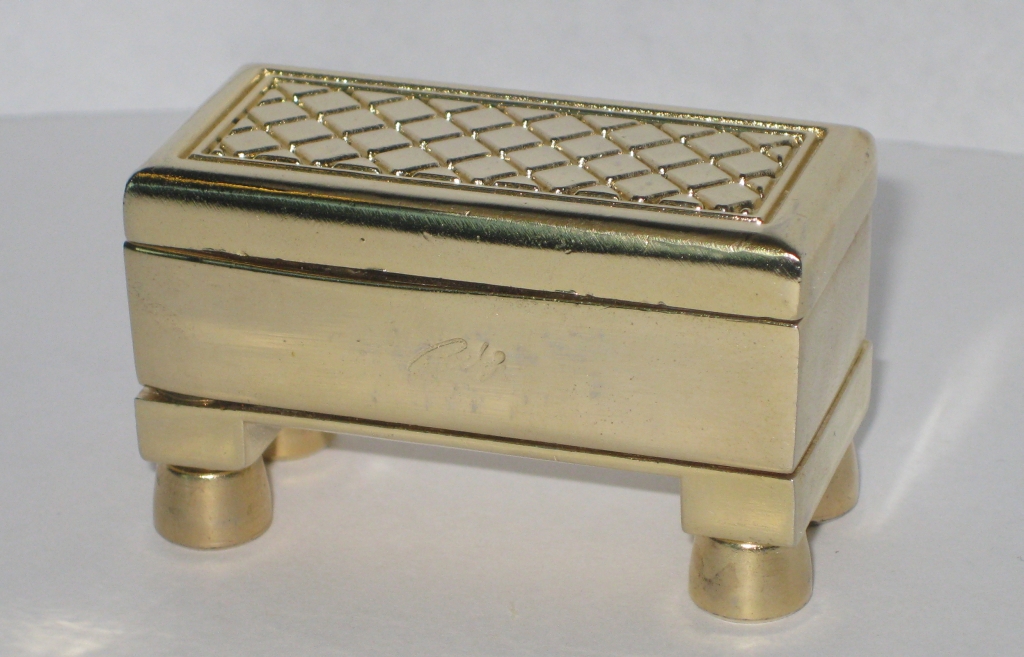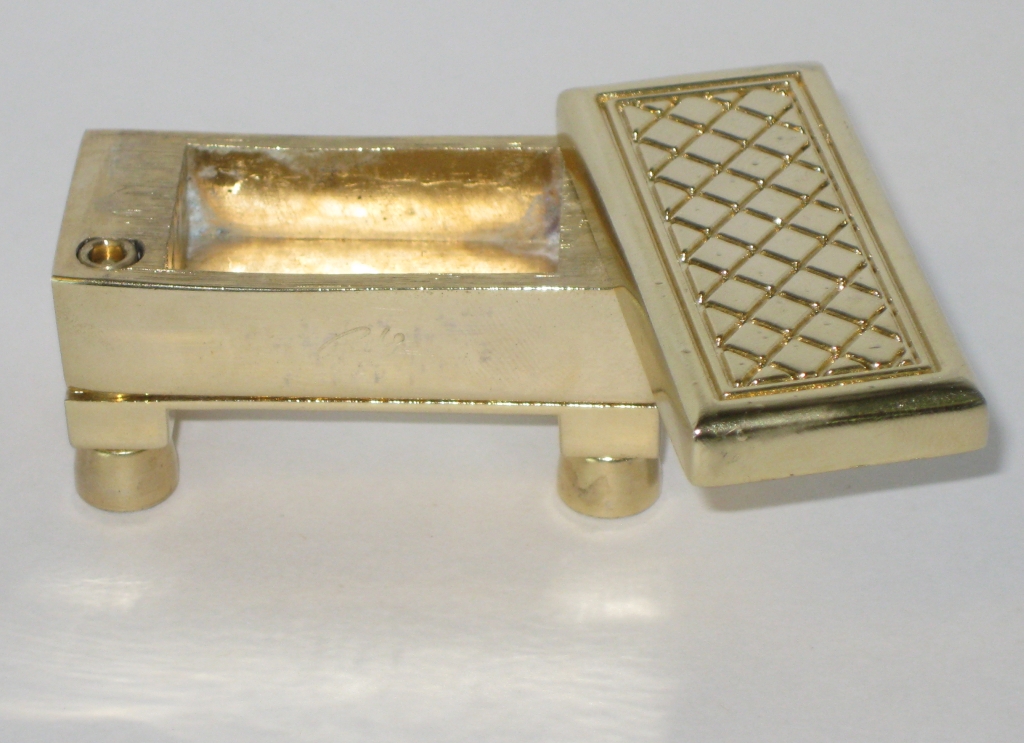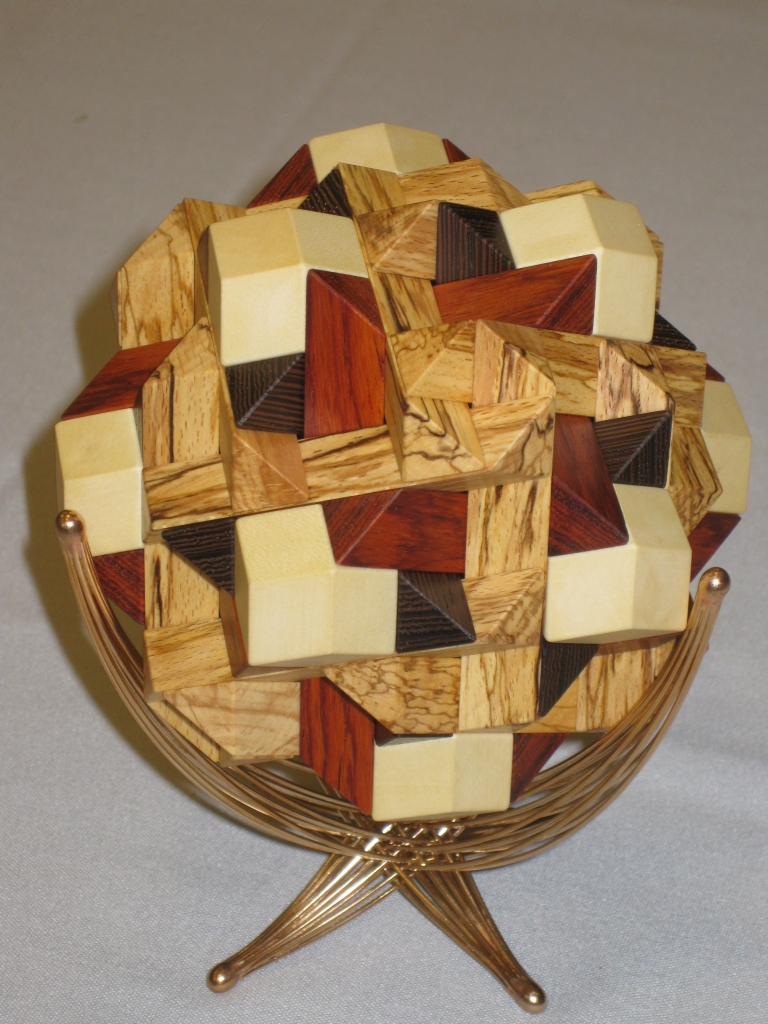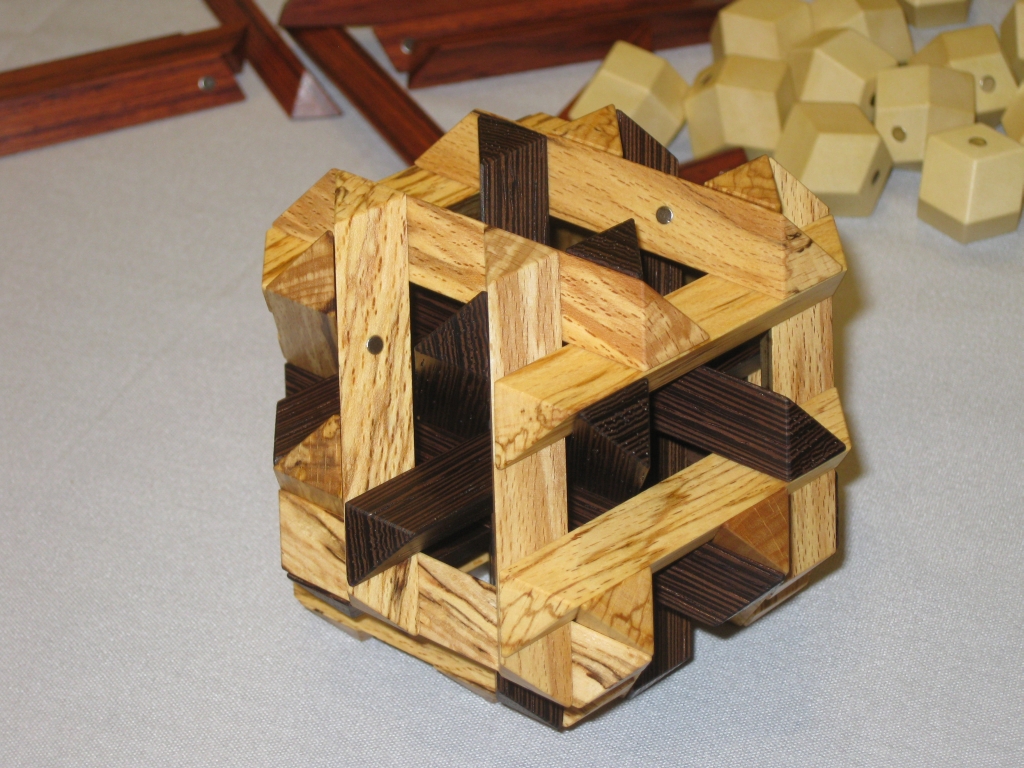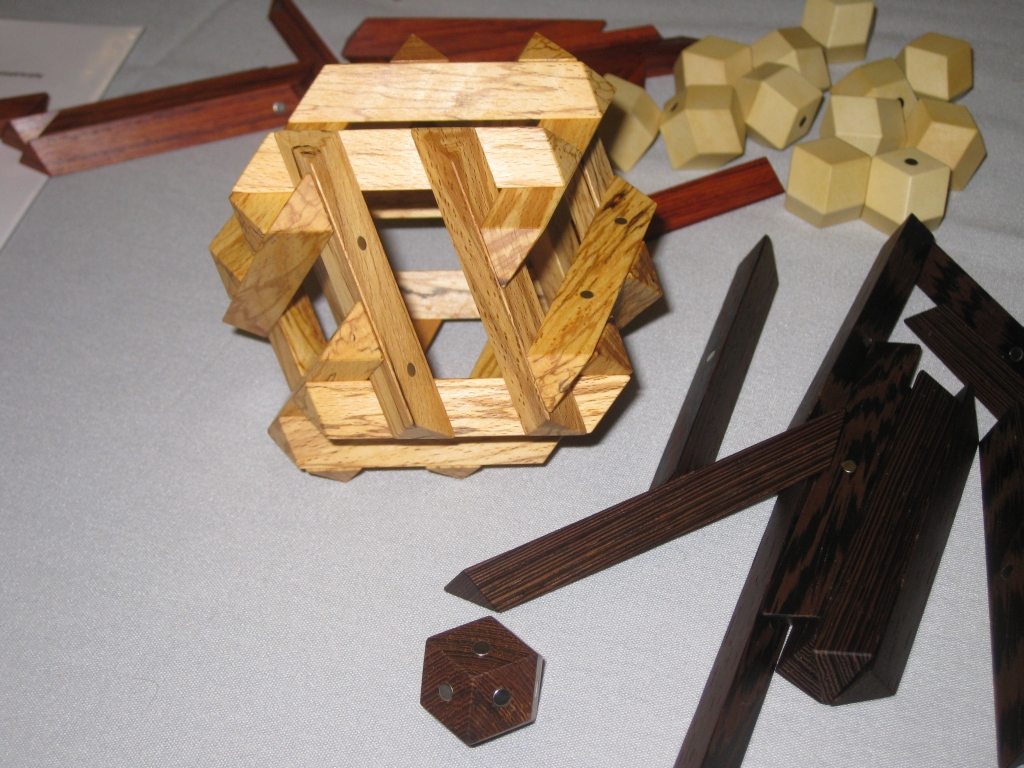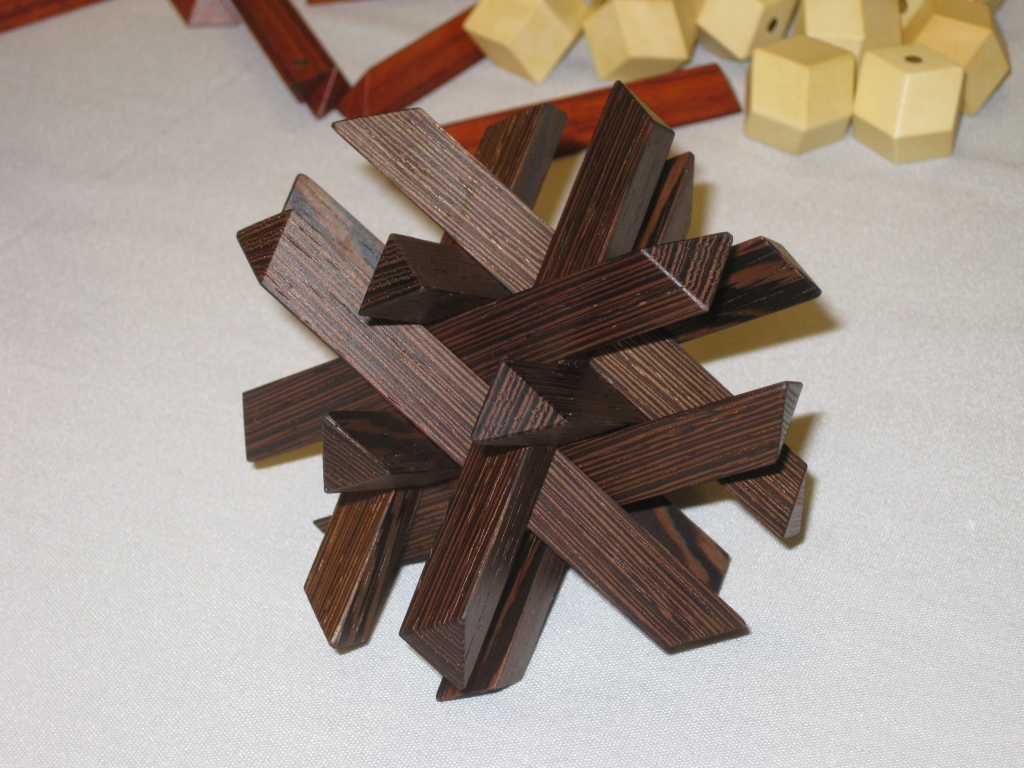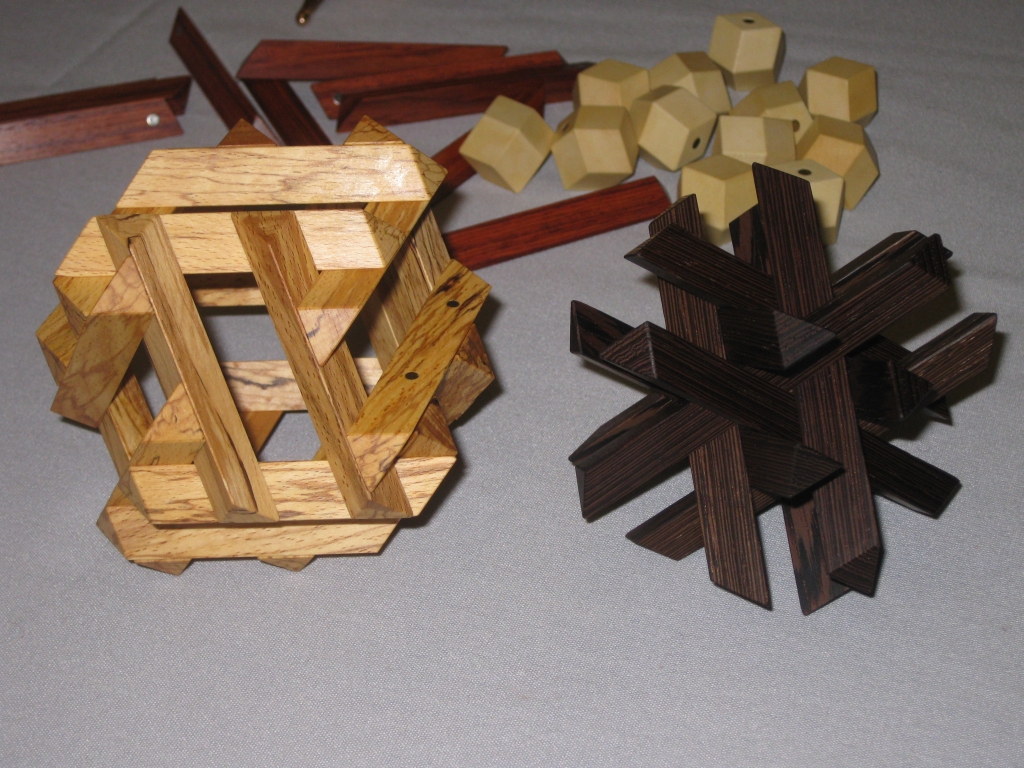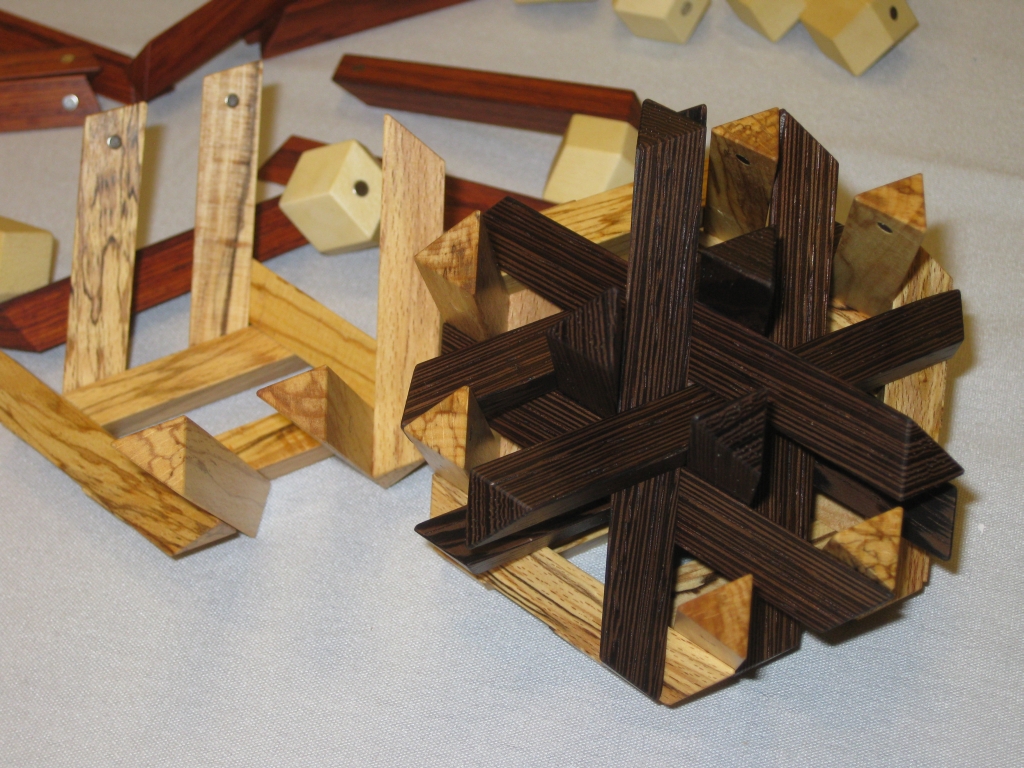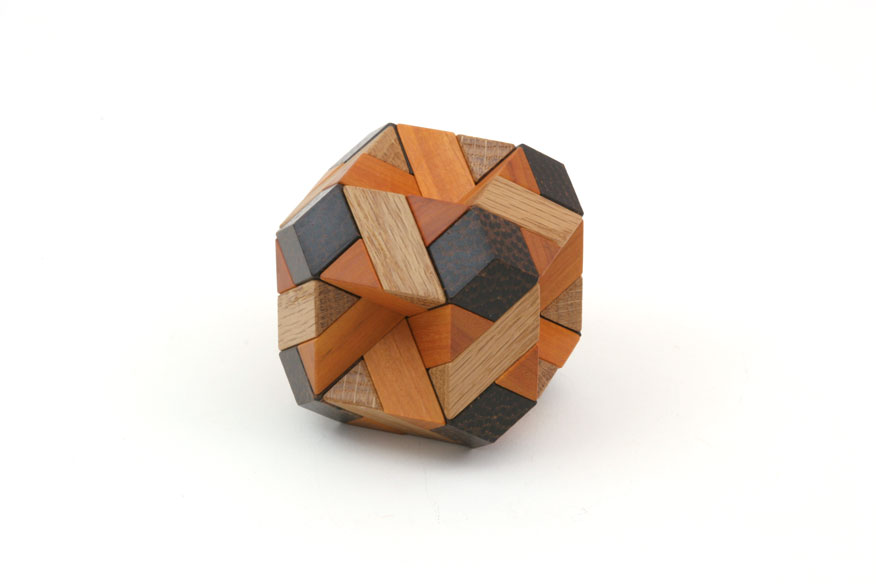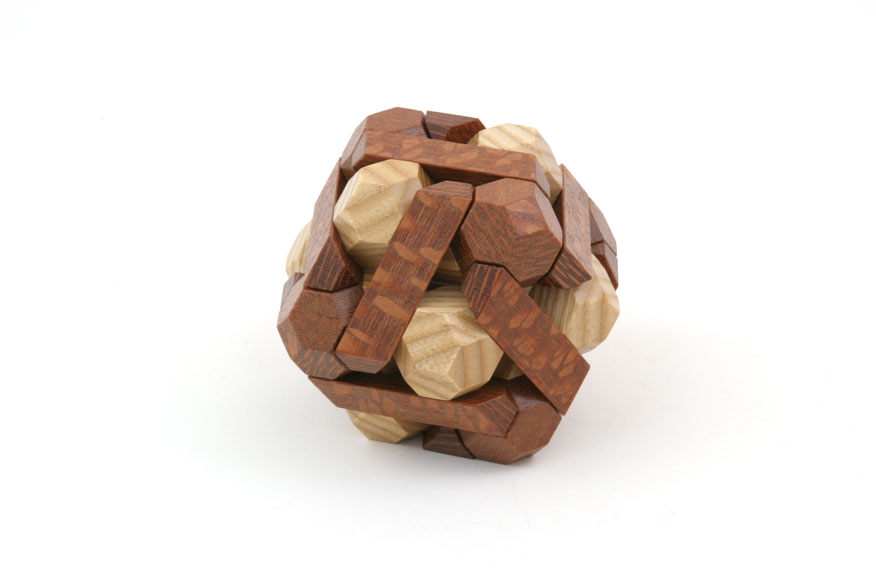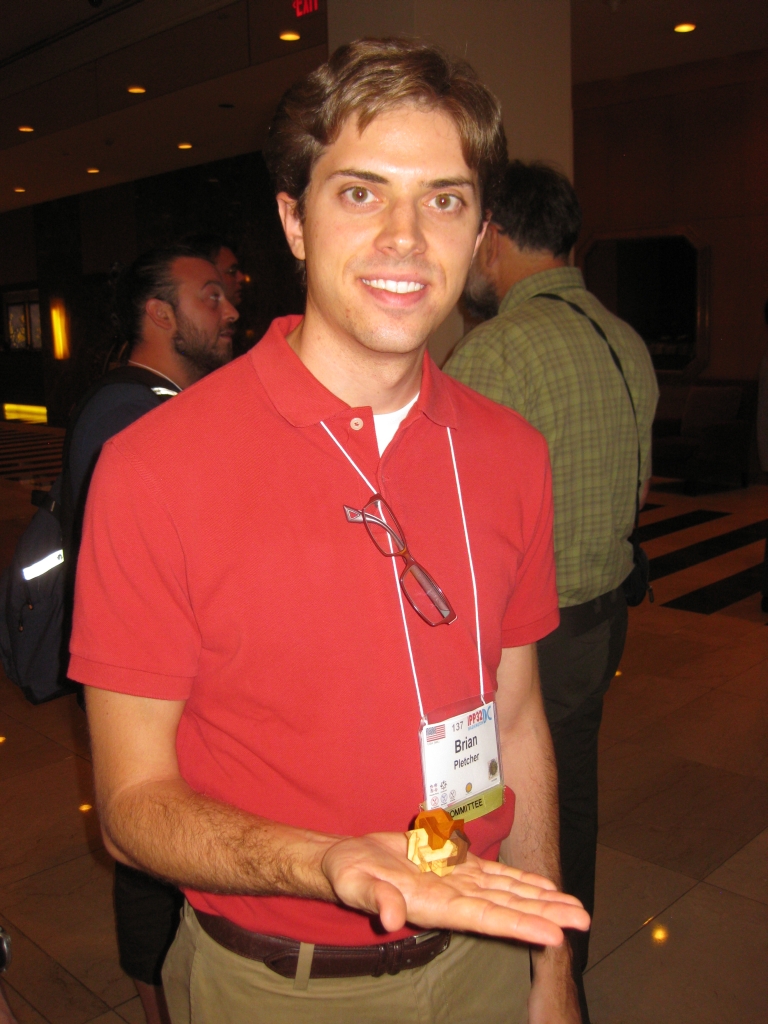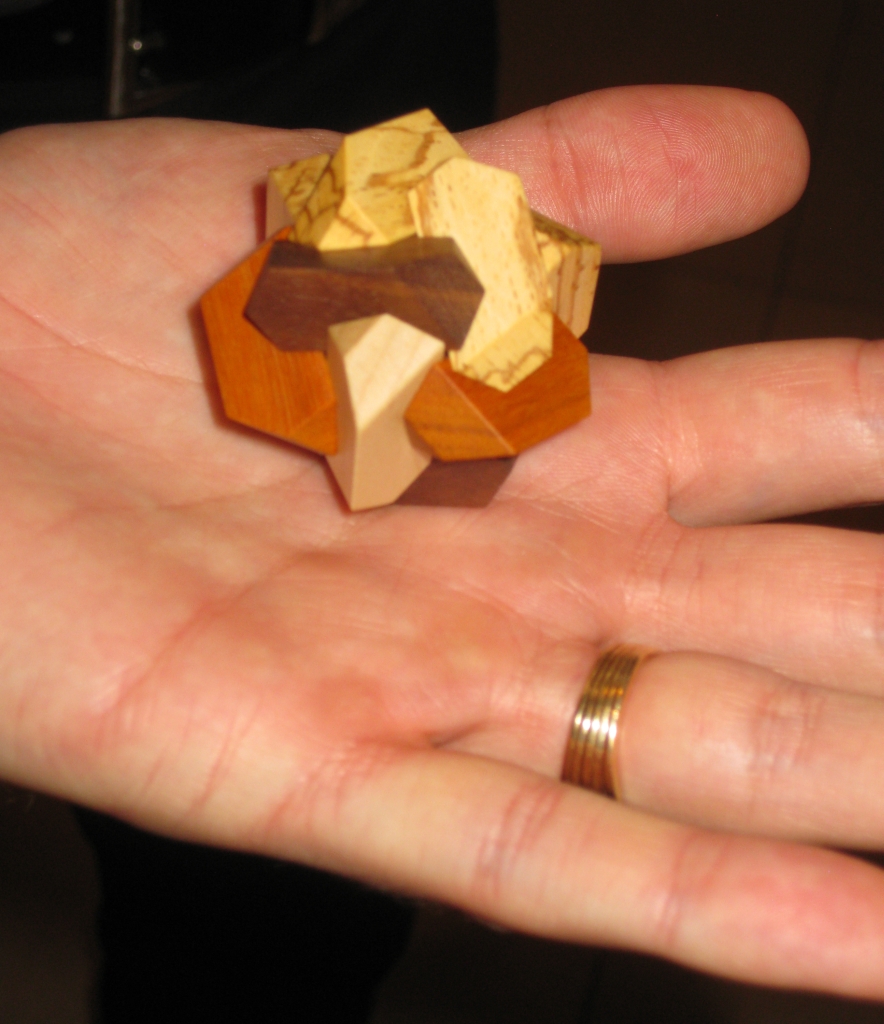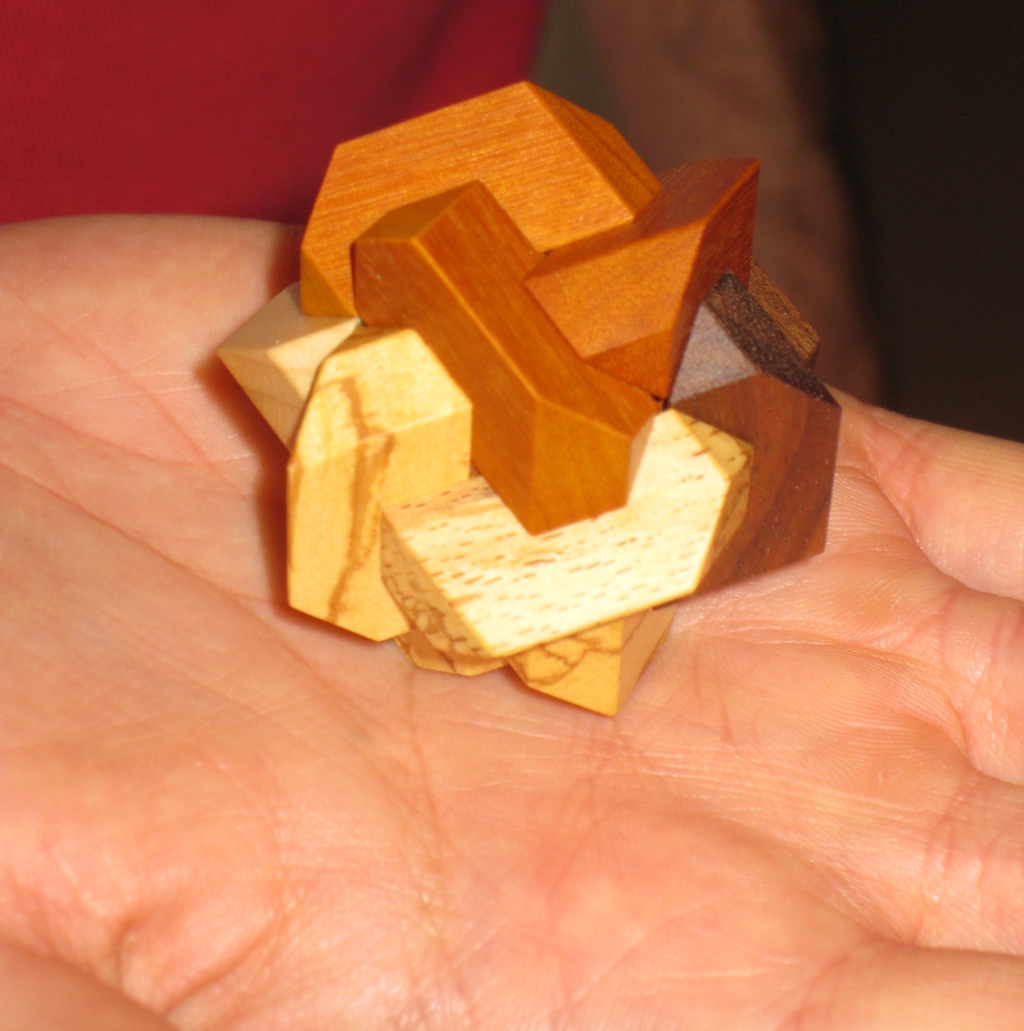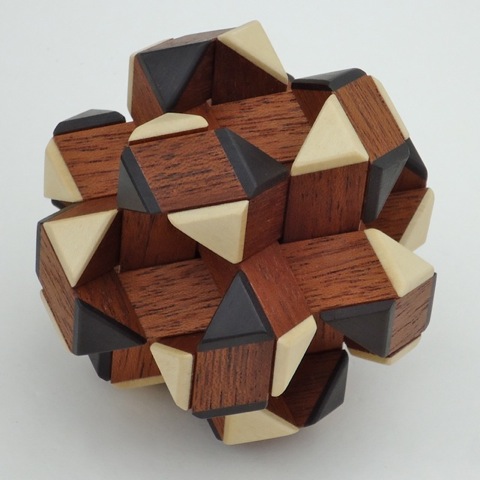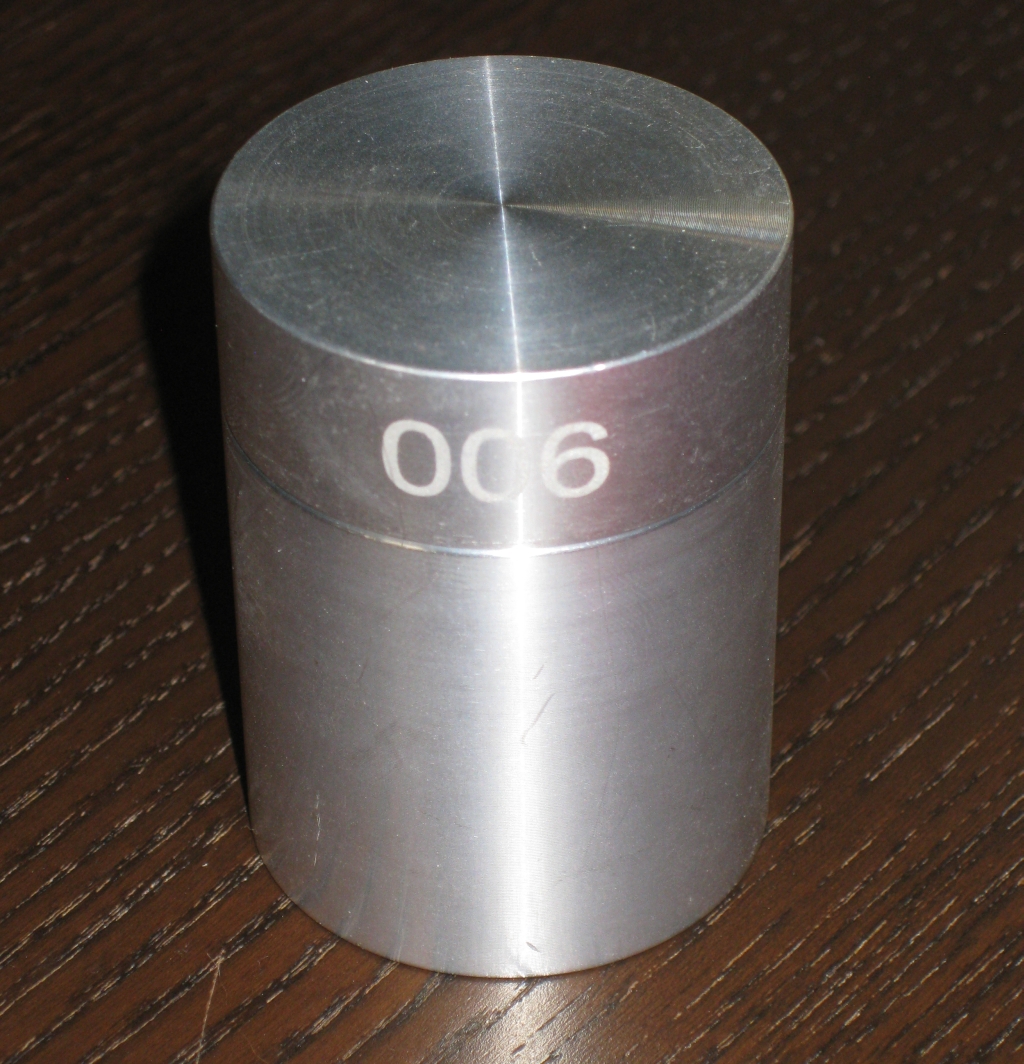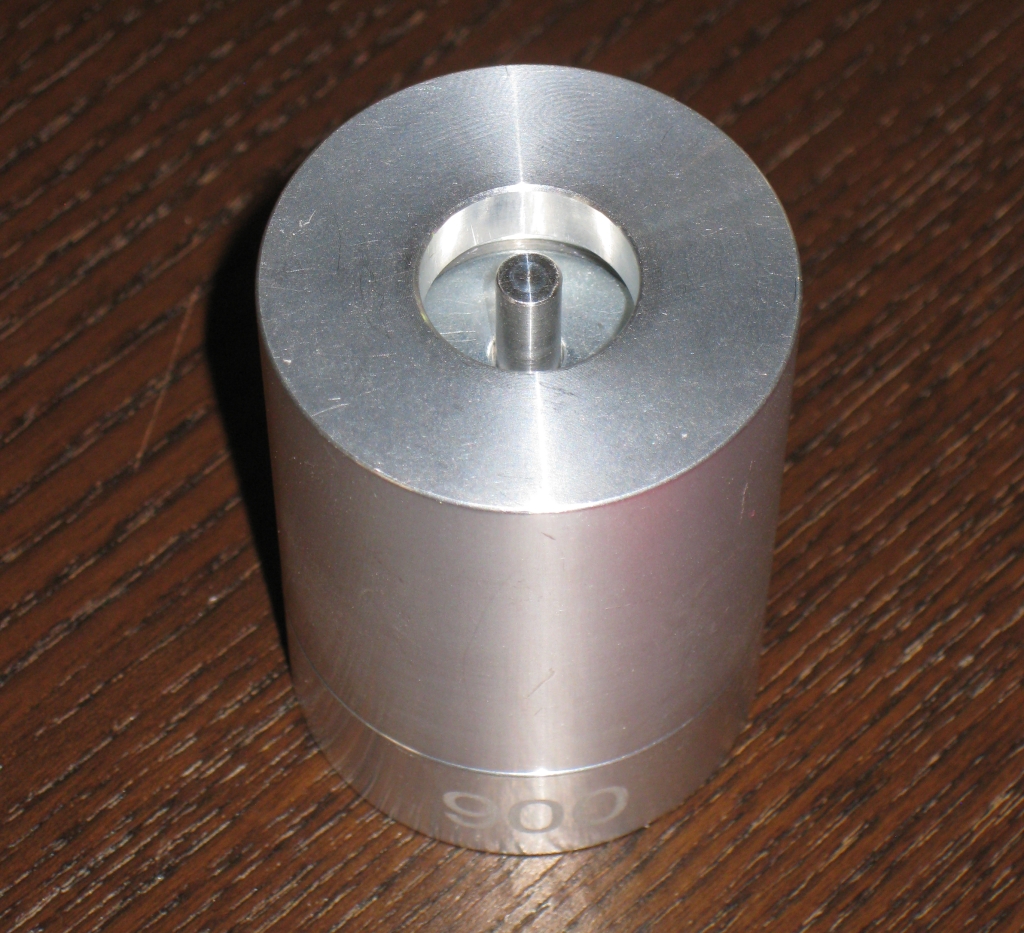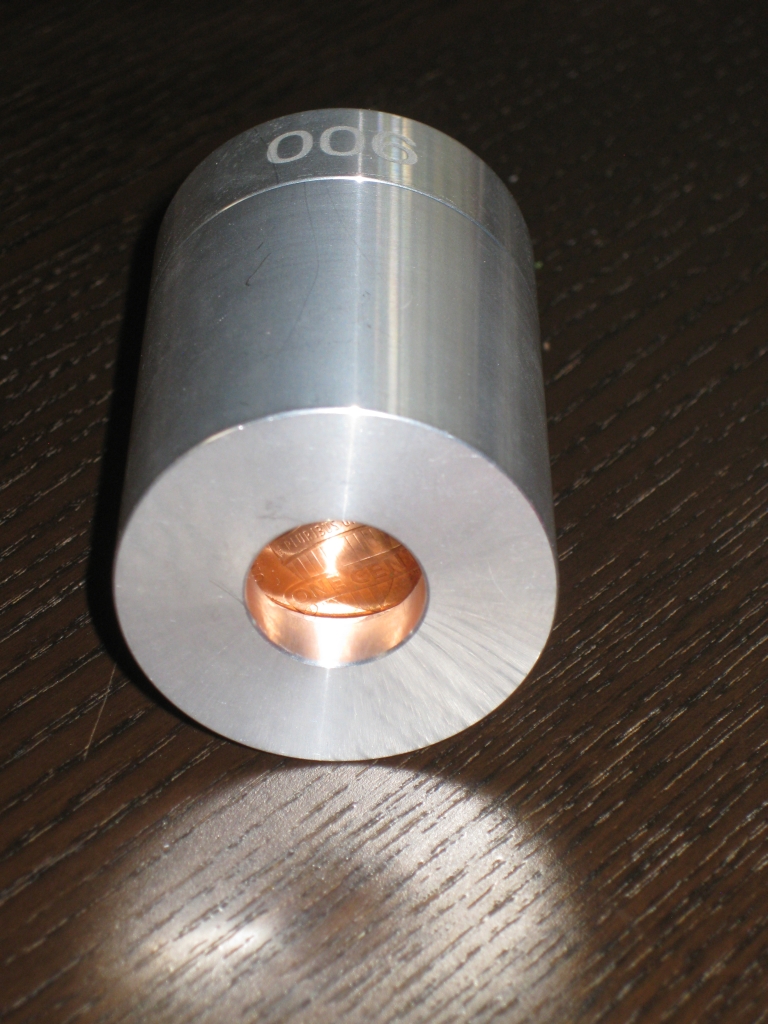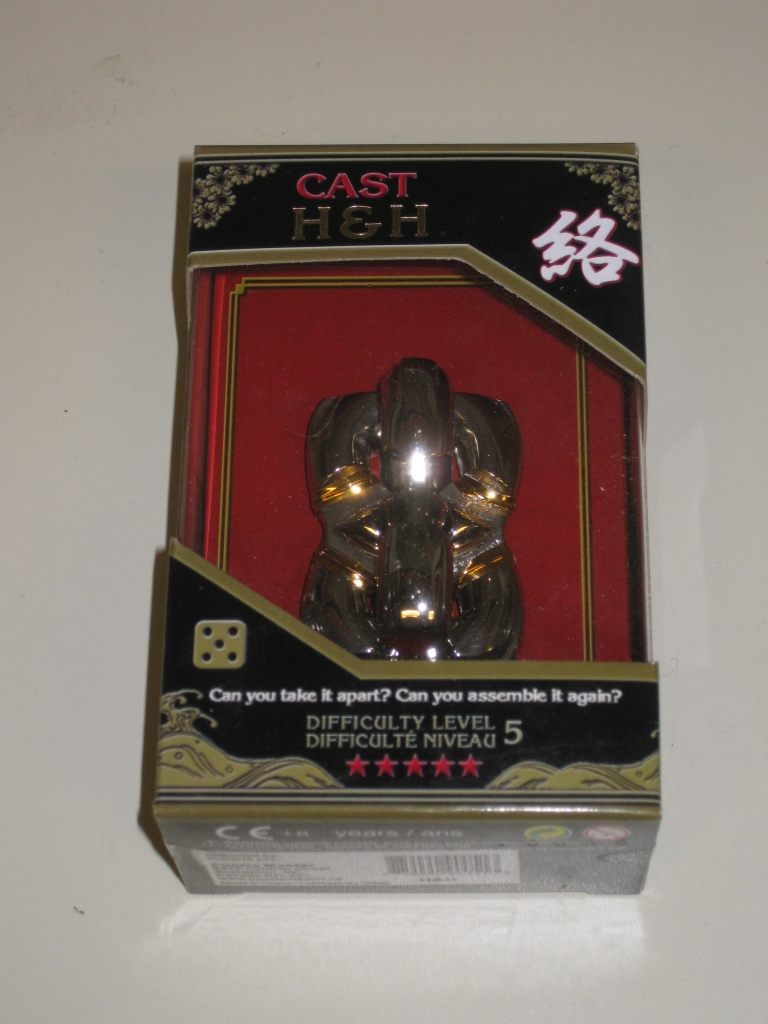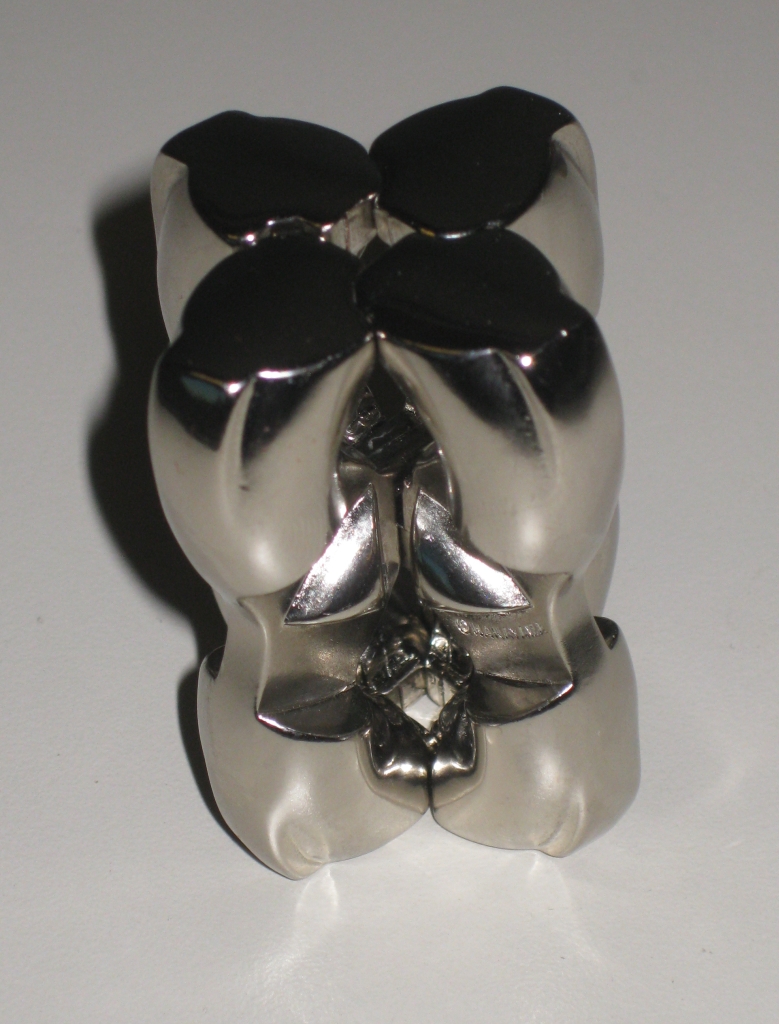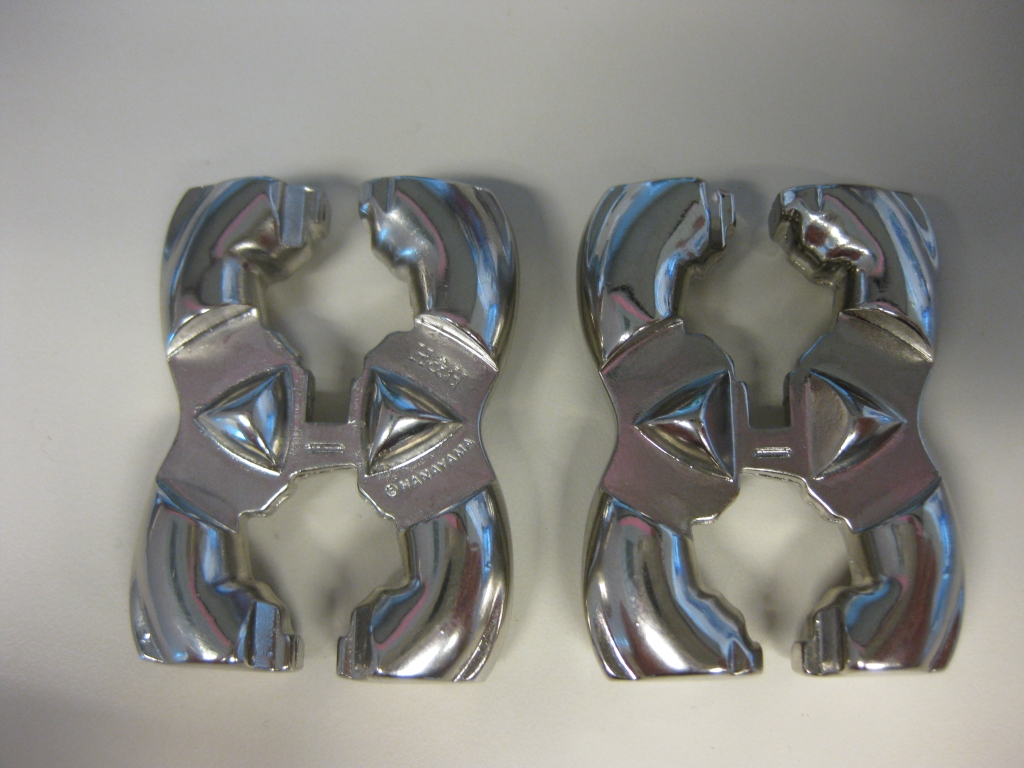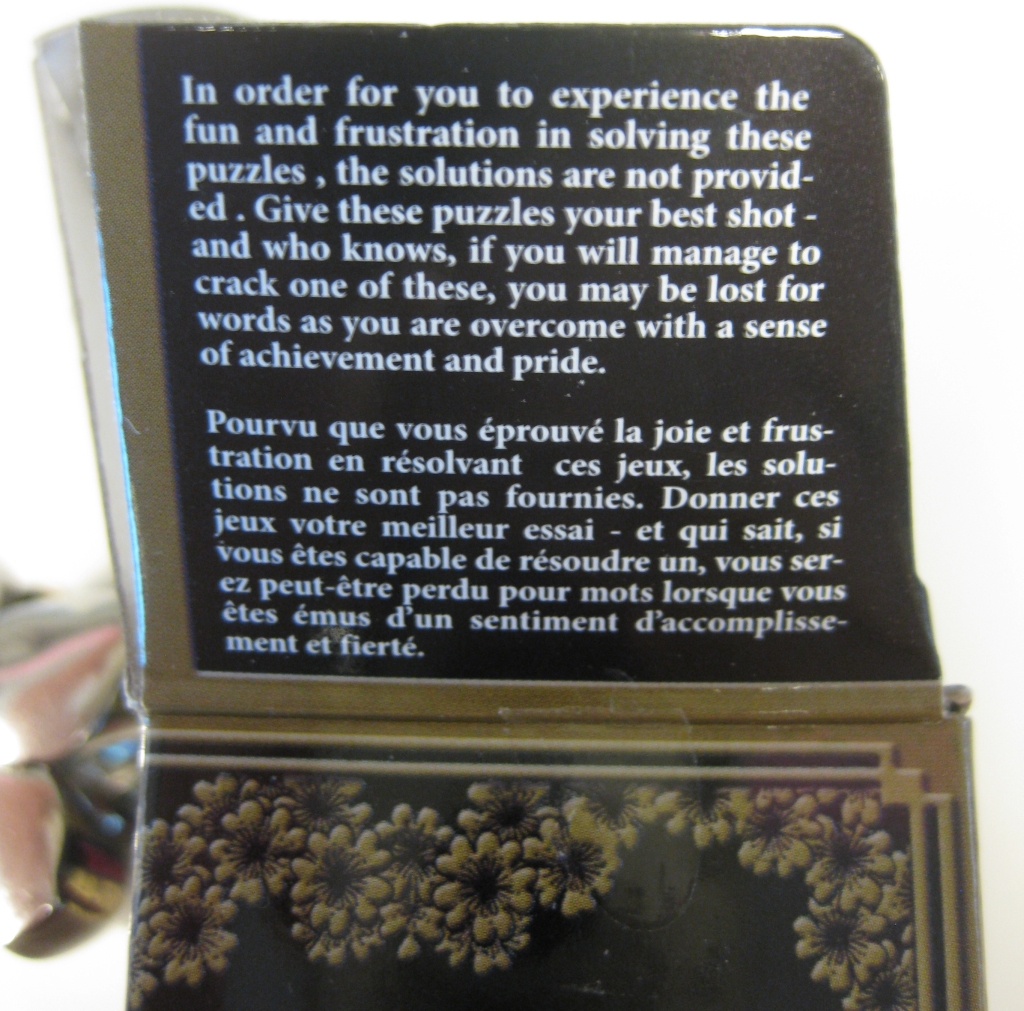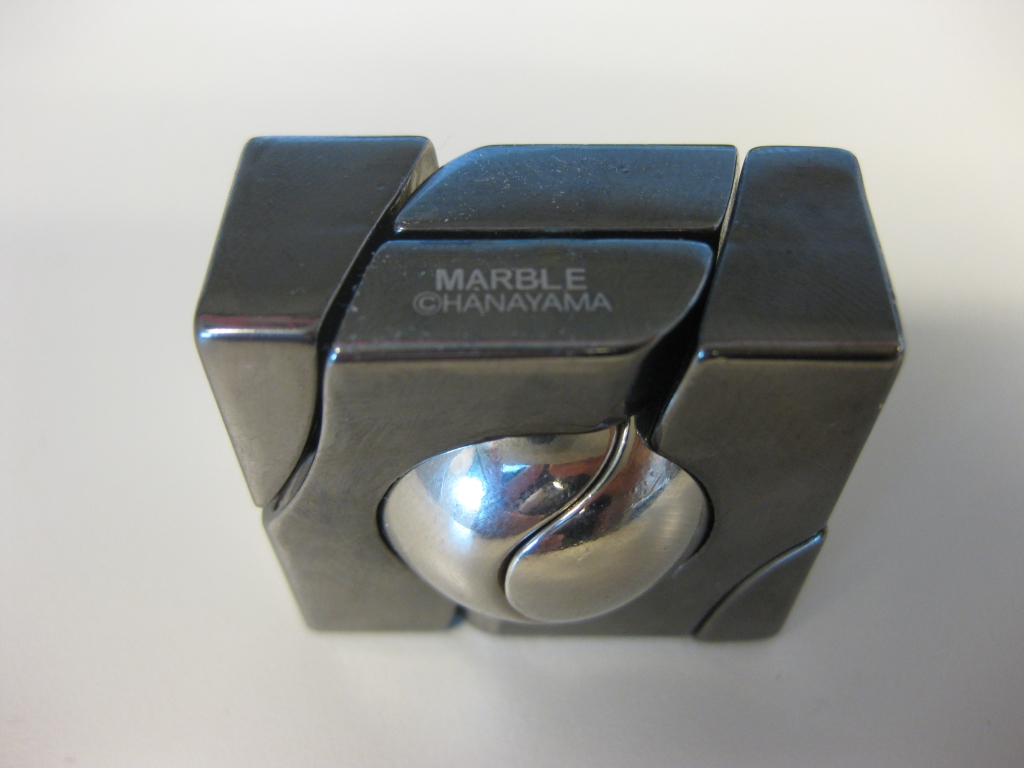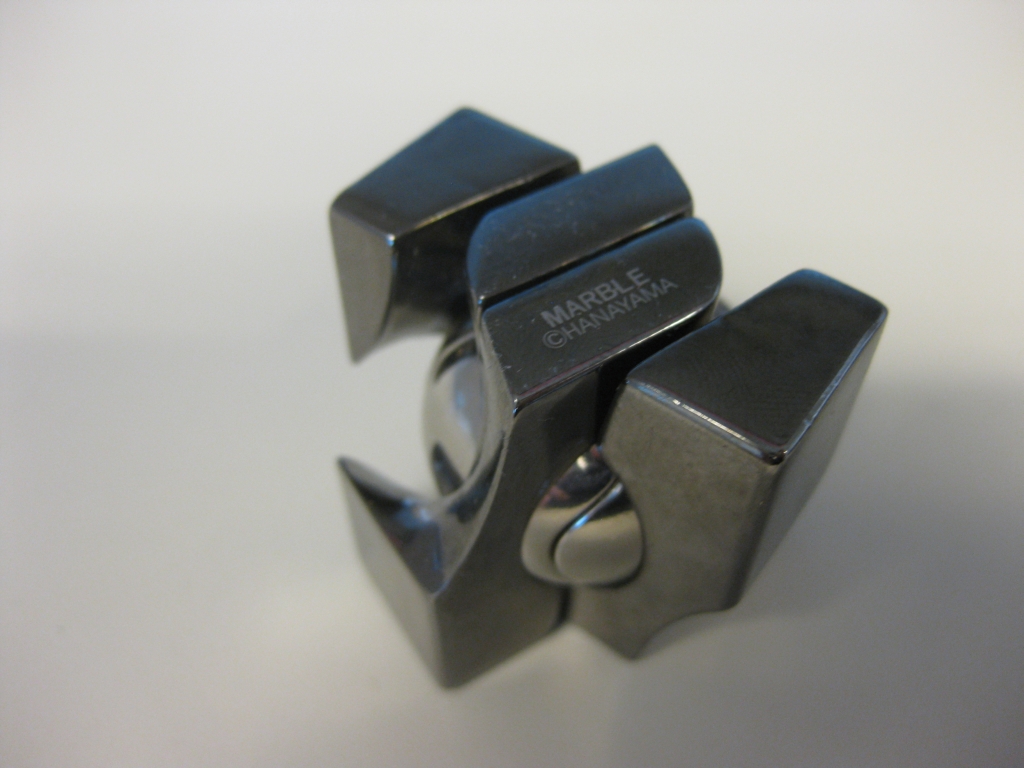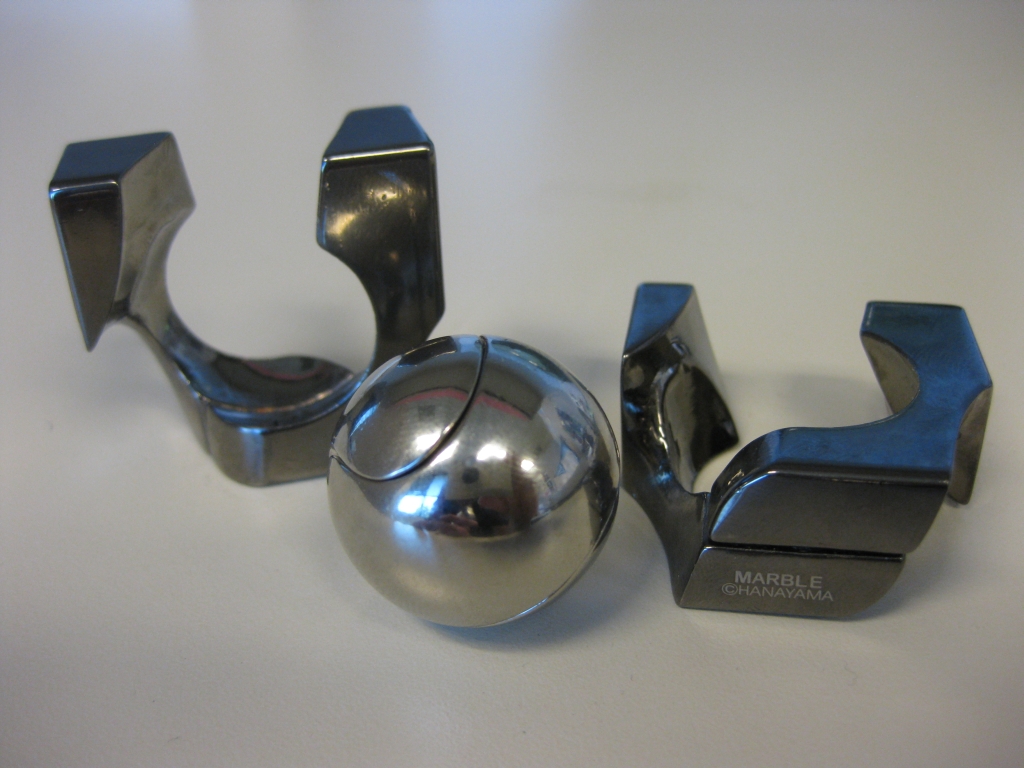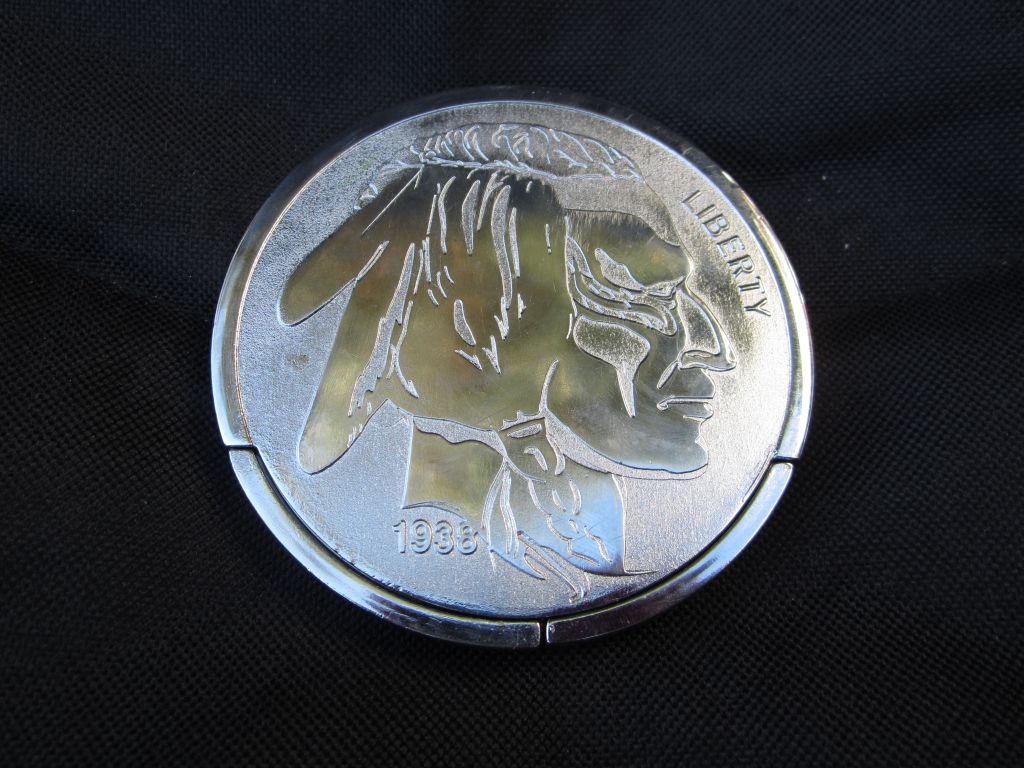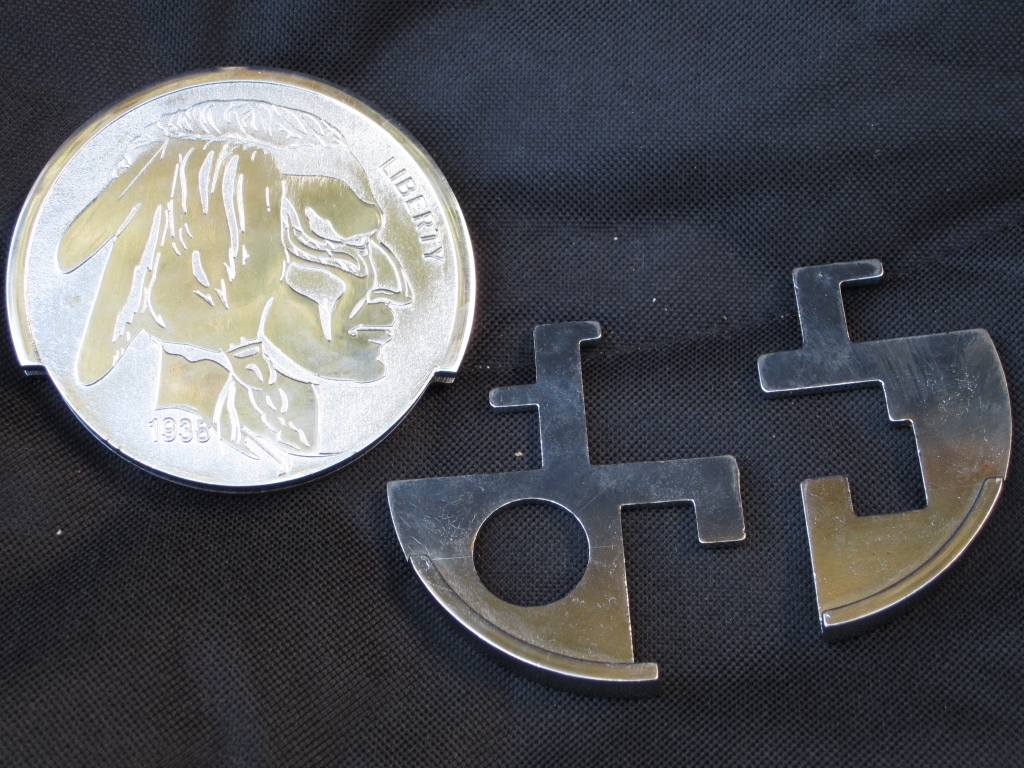The Brass Treasure Chest is a Rocky Chiaro design, produced by Puzzle Master. As the name suggests, this is a small Brass puzzle which is made to look like a treasure chest, and like many of Rocky’s designs contains a devilish locking mechanism that will keep you puzzling for quite some time.
Having met Rocky Chiaro when I was at IPP, and being able to spend time talking to him at his puzzle table on the day of the Puzzle Party, it was great to see the passion he has for his puzzles, and to see just how happy he was to demonstrate his puzzles, and talk about them in general. Getting insight into why he made a puzzle the way he did, or having him show me a much better way to solve a couple of his bolt puzzles after I bungled my way through the solutions myself was superb. Currently the only one of Rocky’s puzzle design’s I own is the Brass Treasure Chest, and having played with a number of his puzzles now, I will have to remedy that!
The Puzzle itself is quite small, measuring 2 1/8″ x 1″ x 1 1/4″, and has a good weight to it given that it’s made from a big lump of brass. The front of the puzzle has Rocky’s signature scribed into it, and if you’re familiar with trick opening boxes, that can’t just be coincidence, and will surely be useful when you try to solve it. The box is reasonably well made, although there are a few edges on my copy which don’t line up perfectly, and there’s a couple of small gaps in the seams between sections of the puzzle. You’re going to have to look closely to see it, and it doesn’t affect the puzzle at all, so it’s not something that should put you off. And no, it’s not going to help you to solve the puzzle either.
When you first start solving this puzzle, there’s a couple of things you’ll find fairly quickly as the first couple of steps are fairly easy to find and allow the top of the chest to rotate a small amount. After that, you hit a dead end, and that’s where the really tricky part starts. Moving the puzzle around (or shaking it) will let you hear that there’s a couple of loose parts in there rattling around, and figuring out how they move is key to opening the box fully. This is fairly typical of Rocky’s designs so will give you a good idea of whether you’re going to like his style of puzzle boxes.
After a lot of what felt like blind stumbling I finally managed to get the box open. I really didn’t understand exactly what I’d done to solve the hidden mechanism, and it took quite a bit of fiddling around with the lid open to understand what I did to allow the lid to swing open freely. It’s a challenging little box, but once you understand the mechanism, it can be opened quickly and repeatedly. The first time took me around 45 minutes over a couple of nights of playing and thinking in-between. No solution is provided with the puzzle, but if you need one, you can find it here.
There’s a small space inside as you can see from the picture which could be used to store a very small item. That said, I’m not sure if anyone would actually store anything inside their puzzle vessels. (I know I don’t)
As an introduction to Rocky’s puzzles the Brass Treasure chest is a very affordable first puzzle, and although the fit and finish isn’t as good as the puzzles that Rocky hand makes, it is a great puzzle for the price. As I mentioned, the mechanism is a classic design so it will give you a good idea of whether you’d enjoy his style of puzzle, before spending a lot more money on a handmade original. Having been fortunate enough to see all of Rocky’s puzzles in person, I can’t praise his work highly enough. Anyone who still makes all his puzzle by hand in brass, with no CNC or computer aids and is able to turn out such high quality puzzles is truly a master craftsman.
